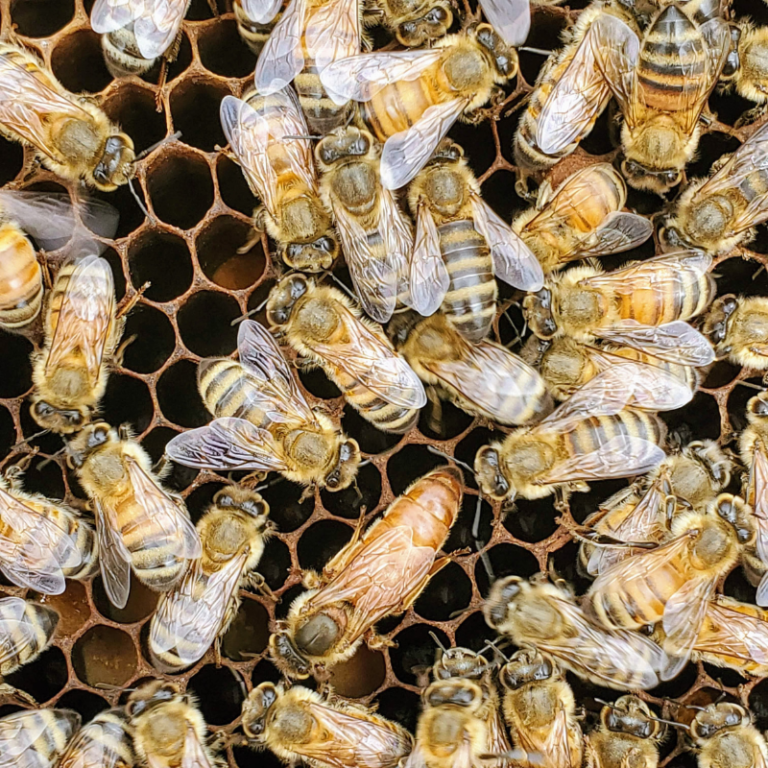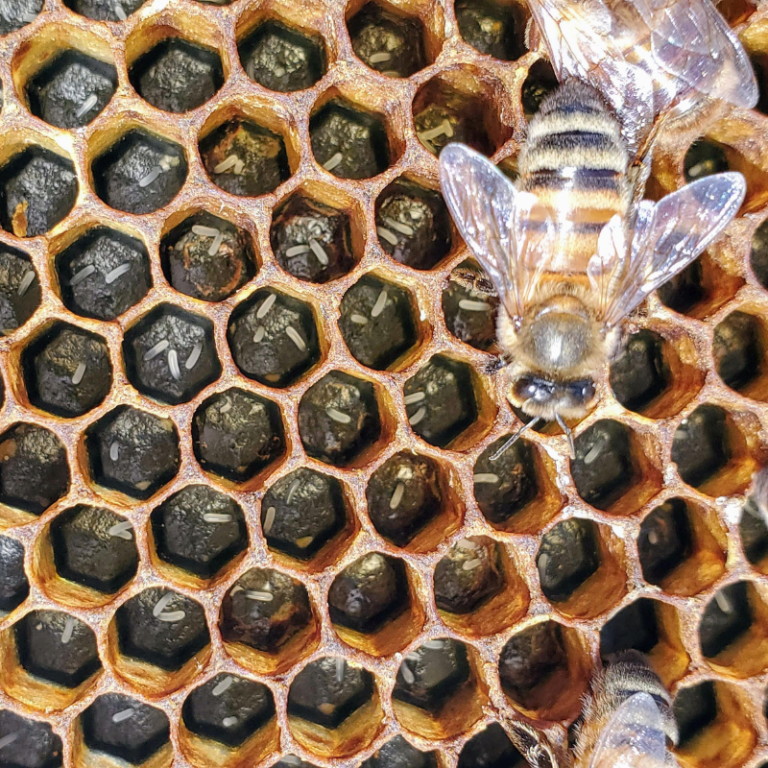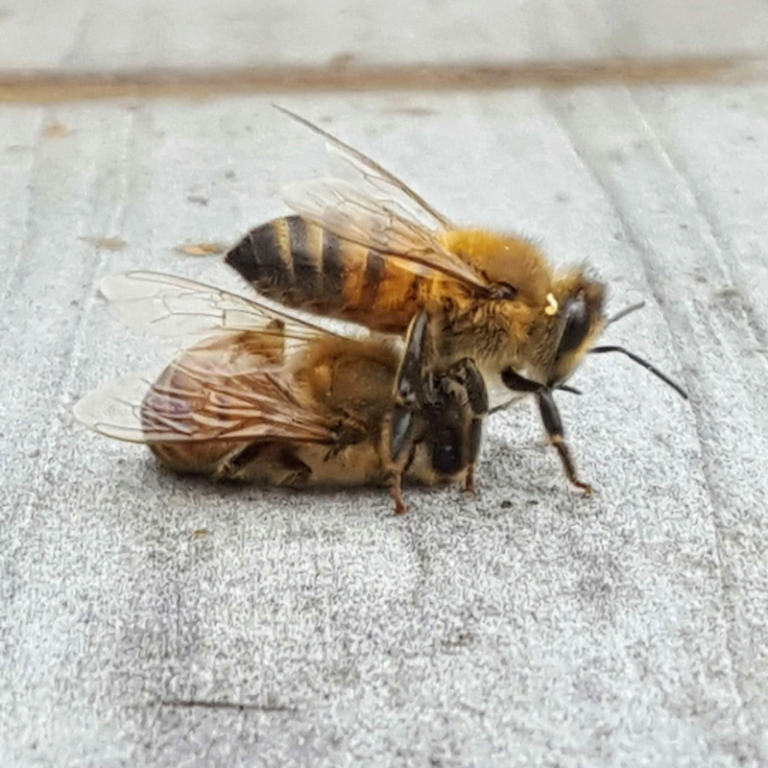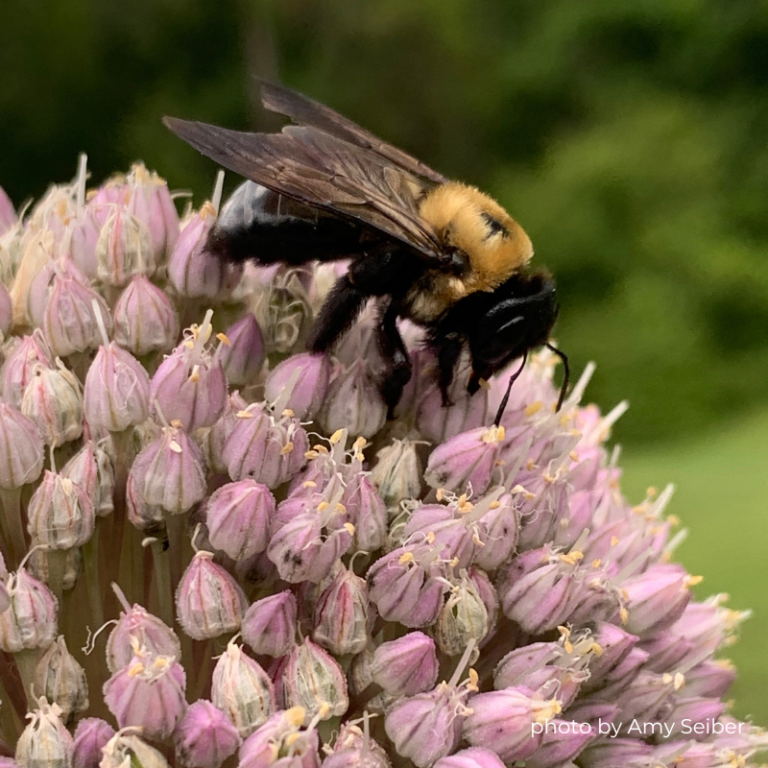Table of Contents
My first hive was a mess. I was given a top-bar box full of bees, and the comb probably fell off the top bars in transit to my house. I didn’t know how to inspect the colony, harvest honey, or do anything except watch the bees go in and out.
Somehow, despite my ignorance and neglect, those bees lived on for seven years. During that time, I learned about all the things I’d done wrong, and I began to be a better beekeeper.
I was very sorry to notice when that hive went quiet. The autopsy was fascinating, though. The bees had built the comb in a beautiful pattern inside that box I had never disturbed. Obviously, they’d successfully requeened themselves at least once.
Experiences like this make you wonder, how long can bees live? How long can a honey bee colony survive?
How Long Do Bees Live?
Honeybees are a superorganism. Their sum is greater than their parts, but all the parts are vital to the group’s survival. No single honeybee can live on its own for very long, but collectively, all the bees in the hive are working for the same purpose: to keep the colony alive. The collective hive could live forever, but the individual bees are mortal, and they depend on each other to survive.
There are three castes of bees: The queen bee, drone bees, and worker bees. All three are necessary to keep the colony going, and all three have different and limited life spans. Together they perform all the duties that keep the honey bee colony alive. If they did not ever meet any survival challenges, they would go on indefinitely.

Colony Members
A colony of bees will live forever if the superorganism made of all the honeybees in the hive is successful.
If each member of the colony successfully fulfills his or her role, if there is enough nectar and pollen available, and if the hive avoids beekeeping pests, diseases, and natural disasters, that colony could live on and reproduce in perpetuity.
Not only could the hive live on forever, but it could also give birth to many more colonies. Any colony of honey bees could swarm multiple times per year.
A swarm happens when an old queen leaves with some of the workers to start a new colony.
Read our blog: What is a Swarm of Bees?
The population of the hive fluctuates throughout the year. In the late winter, the queen will start laying eggs that will become the summer workers. The hive population reaches its peak in the summer with an average of 60,000 bees or more and then begins to decline again.
Bees born in the late fall will become “winter bees,” and those bees live longer—up to six months—but there are fewer of them, and at the end of winter, there will be 20,000 bees or fewer. At that time, though, the queen will be busy laying eggs for the population boom in the spring.
Read our blogs: What Do Bees do in the Winter? and What Happens to Bees in Freezing Weather?
Individual Bees
There are three types or castes of bees in any hive: The queen, the workers, and the drones. queen honey bees and worker honey bees are all female bees, and the drones are all males. They all have different lifespans and varying responsibilities in the colony.
While you might imagine that a beehive has a bucolic existence, it’s actually much more brutal, more like a Game of Thrones episode. Workers with tattered wings work themselves to death.
Queens are killed and replaced, and drones are evicted from the hives or die while mating. There are many ways for individual bees to die. Battling pests and diseases or encounters with poison in the form of pesticides are common problems.
If multiple queens emerge in a hive, they will battle to the death. Sometimes the beekeeper will even kill a queen and replace her because she is declining in productivity.
Sometimes the beekeeper will accidentally kill a queen. Starvation, unfortunate weather or environmental conditions, hive beetles, skunks, bears, and other dangers are all threats to the lifespan of bees.

Master Guide – Where Do I Get Bees?
From our experience of getting new beekeepers started, no part of the beginning is harder than finding bees. Sometimes beginner beekeepers strike gold and get
Queen Bees
Queen bees live longer than any other honey bees. They can live up to five years, but usually are naturally replaced at around two years.
One reason for their longevity is that they are fed royal jelly for their whole lifespan. It’s possible to raise your own queens fairly easily.
The honey bee queen rarely leaves the hive. She is the only reproductive female, and so she leaves the hive only to mate and may only leave again if the bees swarm.
The workers will keep her alive as long as she produces strong pheromones. If her pheromones start to taper off, the worker honey bees will get ready to replace her by creating supersedure cells or queen cups.

Read our blog: What is a Queen Cup?
When a new queen emerges, the old queen either leaves with a swarm or may be killed— surrounded and heated to death by a ball of worker bees.
Within two weeks, the new virgin queen will go on mating flights to mate with 15 or more drones in a drone congregation area. If she survives the mating flight, she will not fly again unless she leaves with a swarm.
If she doesn’t return, the hive will die unless the beekeeper replaces the queen, gives the bees a frame of eggs to make a new queen, or combines the bees with another colony.

Because she doesn’t work outside the hive, the queen bee’s wings don’t wear out. After mating, she will start laying eggs in 2.5-3 days and continue laying around 1500 eggs a day for the rest of her life span, depending on the season.
Being fed royal jelly gives her the nutrition to live longer than other bees. Her ovaries can produce up to 1 million eggs.
If you are interested in reading more fascinating facts about queen bees, Hilary Kearney’s lovely book Queenspotting is a great resource filled with beautiful photos.
Drone Bees
Drone bees are male bees. They are hatched from unfertilized eggs, and their only life purpose is to mate with a queen bee.
Drone bees live between 30 days to two months. Their population is highest in the spring, which is mating season. Drones fly out to drone congregation areas, sometimes 80 feet high, and die when they mate in flight, leaving their genitalia in the queen.
If a drone bee does not find a queen to mate with and is still alive in the late summer or fall, he may be kicked out and left to starve.
The workers don’t need him, and the colony must be economical with their food through the winter. More details on the drones life.
Fun fact: Drone honey bees have the largest genitalia in proportion to body size in the animal kingdom.

Worker Bees
Worker bees are female bees that come from fertilized eggs. When a worker bee emerges from her cocoon, she immediately begins to work, and in her very short lifetime, she will do many different jobs.
First, she cleans her own cell and marks it with pheromones so that the queen can lay another egg in that space. Then she matriculates into many other roles.
In her short lifetime, after the initial housecleaning, she will be a nurse bee who takes care of hungry larvae.
In the pre-foraging stage, during her first few weeks, she will clean and ventilate the hive, carry out dead bees, attend to the queen, build comb, process nectar to make honey, guard the doorways, and finally, she will begin to forage outside the hive.
When there is abundant nectar and pollen in early spring, worker bees in the spring and summer live from 2-6 weeks because they work so hard.
Foraging is hard on worker bees. Their wings become tattered, and they lose their hair. Spring and summer honeybees actually work themselves to death. Many bees die while foraging or encounter poisons that kill them.

In the winter, worker bees live longer—winter worker bees can live as long as six months.
Bees born in the autumn have larger fat bodies in their abdomen, and because they are not leaving the hive as often or living at the quick speed and intensity of the summer hive, winter bees live longer.
This difference is necessary because the queen slows down brood production when it is cold, and she needs enough fat winter bees to keep her warm and to feed her and the brood through the coldest part of the year.

What Do Bees Do In The Winter?
So what happens to honey bees in the winter? Bees pretty much disappear from the flowers and our minds as well, not to be thought
Honey Bee Life Span vs. Other Types of Bees
There are 20,000 kinds of bees in the world. In America, there are 4000 bee species. How long do other bee populations live? Most other types of solitary bee species live for a year at most, hibernating alone in a larval stage until the spring.
Female solitary bees will lay 20-30 eggs in their three to eight-week adult lifetime and work long days in their short lives. Males live only long enough to mate.
Honey bees are eusocial, meaning that they live in a group, cooperate to raise their brood, have overlapping generations and reproductive division of labor, meaning that only certain bees (the queens) reproduce.
There are other insects that are eusocial, but very few other types of bees are eusocial. This organization contributes to the honeybee lifespan and longevity of the honey bee hive.
Bumble Bees
In most of the world, Bumble bees live within a one-year life cycle. A mated queen bee who has survived the winter sets up a new wax nest made with wax from the queen bee’s body, where she will store pollen and nectar that she collects.
Then she lays eggs in the pollen near the stored nectar and keeps the eggs warm.
The worker bumble bees live an average of four weeks, varying by species, and when the queen reaches the end of her life span, she will lay eggs that will become new queens and drone bees.
These new bumble bee queens will mate, hibernate, and repeat the cycle.

Why Did My Package of Bees Leave?
You’re a brand new beekeeper; you have taken a beekeeping course, bought bees, assembled your equipment, read the books, and chose the perfect hive location.

Carpenter Bees
Carpenter bees are solitary bees, meaning they live alone. They do not produce honey, have a queen, or live in hives. Female Carpenter Bees mate with Male bees, who die after mating.
Females will then burrow holes into wood, lay eggs, pack in some nectar and pollen for the larvae to eat when the eggs hatch, and then in winter, they’ll overwinter in a hole in wood. Carpenter bees live for up to three years.



